|
Your search criteria found 583 images Target is Jupiter |
| My List |
Addition Date |
Target
|
Mission | Instrument | Size |

|
1998-03-26 | Jupiter |
Galileo |
Solid-State Imaging |
900x1500x3 |

|
|||||

|
1998-03-26 | Jupiter |
Galileo |
Solid-State Imaging |
1200x1500x3 |

|
|||||

|
1998-03-26 | Jupiter |
Galileo |
Solid-State Imaging |
1200x1500x3 |

|
|||||

|
1998-03-26 | Jupiter |
Galileo |
Solid-State Imaging |
900x1600x3 |

|
|||||

|
1998-03-26 | Jupiter |
Galileo |
Solid-State Imaging |
900x1600x3 |

|
|||||

|
1998-03-06 | Jupiter |
Galileo |
Solid-State Imaging |
1300x1000x3 |

|
|||||

|
1997-11-04 | Jupiter |
Galileo |
Solid-State Imaging |
313x256x1 |
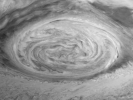
|
|
||||

|
1997-12-04 | Jupiter |
Galileo |
Solid-State Imaging |
571x1000x3 |

|
|||||

|
1997-12-10 | Jupiter |
Galileo |
Solid-State Imaging |
1700x900x3 |

|
|||||

|
1997-12-10 | Jupiter |
Galileo |
Solid-State Imaging |
1650x950x3 |

|
|||||

|
1997-12-18 | Jupiter |
Galileo |
Solid-State Imaging |
1000x1700x1 |

|
|||||

|
1997-12-18 | Jupiter |
Galileo |
Solid-State Imaging |
1000x1700x1 |

|
|||||

|
1997-12-18 | Jupiter |
Galileo |
Solid-State Imaging |
1000x1700x1 |

|
|||||

|
1997-12-18 | Jupiter |
Galileo |
Solid-State Imaging |
800x800x3 |

|
|||||

|
1997-12-18 | Jupiter |
Galileo |
Solid-State Imaging |
683x467x3 |

|
|||||

|
1997-12-18 | Jupiter |
Galileo |
Solid-State Imaging |
518x368x3 |

|
|||||

|
1997-12-18 | Jupiter |
Galileo |
Solid-State Imaging |
1000x1000x1 |

|
|||||

|
1998-03-06 | Jupiter |
Galileo |
Solid-State Imaging |
800x900x3 |

|
|||||

|
1998-03-06 | Jupiter |
Galileo |
Solid-State Imaging |
1300x1000x1 |

|
|||||

|
1998-03-06 | Jupiter |
Galileo |
Solid-State Imaging |
1300x1000x1 |

|
|||||

|
1998-03-06 | Jupiter |
Galileo |
Solid-State Imaging |
640x485x1 |

|
|||||

|
1998-03-06 | Jupiter |
Galileo |
Solid-State Imaging |
552x735x1 |

|
|||||

|
1998-03-06 | Jupiter |
Galileo |
Solid-State Imaging |
1600x1200x3 |
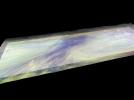
|
|||||

|
1998-03-06 | Jupiter |
Galileo |
Solid-State Imaging |
1600x1200x3 |

|
|||||

|
1998-03-06 | Jupiter |
Galileo |
Solid-State Imaging |
1600x1200x3 |

|
|||||

|
1998-03-06 | Jupiter |
Galileo |
Solid-State Imaging |
1600x1200x3 |

|
|||||

|
1998-03-06 | Jupiter |
Galileo |
Solid-State Imaging |
1600x1200x3 |

|
|||||

|
1998-03-06 | Jupiter |
Galileo |
Solid-State Imaging |
1600x1200x3 |

|
|||||

|
1998-03-06 | Jupiter |
Galileo |
Solid-State Imaging |
572x480x1 |

|
|||||

|
1998-03-06 | Jupiter |
Galileo |
Solid-State Imaging |
572x480x1 |

|
|||||

|
1998-03-06 | Jupiter |
Galileo |
Solid-State Imaging |
572x960x1 |

|
|||||

|
1998-03-06 | Jupiter |
Galileo |
Solid-State Imaging |
1300x1200x1 |

|
|||||

|
1998-03-06 | Jupiter |
Galileo |
Solid-State Imaging |
1300x1200x1 |

|
|||||

|
1998-03-06 | Jupiter |
Galileo |
Solid-State Imaging |
1300x600x1 |

|
|||||

|
1998-03-06 | Jupiter |
Galileo |
Solid-State Imaging |
1300x600x1 |

|
|||||

|
1998-03-06 | Jupiter |
Galileo |
Solid-State Imaging |
1300x1200x1 |

|
|||||

|
1998-03-06 | Jupiter |
Galileo |
Solid-State Imaging |
1300x600x1 |

|
|||||

|
1998-03-06 | Jupiter |
Galileo |
Solid-State Imaging |
1300x600x1 |
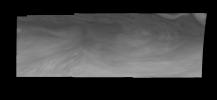
|
|||||

|
1998-03-06 | Jupiter |
Galileo |
Solid-State Imaging |
1000x1000x1 |

|
|||||

|
1998-03-06 | Jupiter |
Galileo |
Solid-State Imaging |
1000x1000x1 |

|
|||||

|
1998-03-06 | Jupiter |
Galileo |
Solid-State Imaging |
900x500x1 |

|
|||||

|
1998-03-06 | Jupiter |
Galileo |
Solid-State Imaging |
900x500x1 |

|
|||||

|
1998-03-06 | Jupiter |
Galileo |
Solid-State Imaging |
1300x1200x1 |

|
|||||

|
1998-03-06 | Jupiter |
Galileo |
Solid-State Imaging |
1300x1200x1 |

|
|||||

|
1998-03-26 | Jupiter |
Galileo |
Near Infrared Mapping Spectrometer |
712x725x3 |

|
|||||

|
1998-03-26 | Jupiter |
Galileo |
Solid-State Imaging |
1200x1600x1 |

|
|||||

|
1998-03-26 | Jupiter |
Galileo |
Solid-State Imaging |
1000x1200x1 |

|
|||||

|
1998-03-26 | Jupiter |
Galileo |
Solid-State Imaging |
1000x1200x1 |

|
|||||

|
1998-03-26 | Jupiter |
Galileo |
Solid-State Imaging |
600x600x1 |

|
|
||||

|
1998-03-26 | Jupiter |
Galileo |
Solid-State Imaging |
640x485x1 |
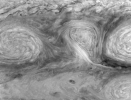
|
|
||||

|
1998-04-02 | Jupiter |
Galileo |
Photopolarimeter-Radiometer |
468x604x3 |

|
|||||

|
1998-04-02 | Jupiter |
Galileo |
Photopolarimeter-Radiometer |
429x585x3 |

|
|||||

|
1998-05-02 | Jupiter |
Hubble Space Telescope |
WFPC2 |
795x900x3 |

|
|||||

|
1998-05-02 | Jupiter |
Hubble Space Telescope |
WFPC2 |
1152x860x3 |

|
|||||

|
1998-05-02 | Jupiter |
Hubble Space Telescope |
WFPC2 |
720x900x3 |

|
|||||

|
1998-05-02 | Jupiter |
Hubble Space Telescope |
WFPC2 |
2069x2489x3 |

|
|||||

|
1998-05-02 | Jupiter |
Hubble Space Telescope |
WFPC2 |
720x600x1 |

|
|||||

|
1998-05-02 | Jupiter |
Hubble Space Telescope |
WFPC2 |
850x490x3 |

|
|||||

|
1998-05-02 | Jupiter |
Hubble Space Telescope |
WFPC2 |
800x600x3 |

|
|||||

|
1998-05-02 | Jupiter |
Hubble Space Telescope |
WFPC2 |
600x700x3 |

|
|||||

|
1998-05-02 | Jupiter |
Hubble Space Telescope |
WFPC2 |
800x800x3 |

|
|||||

|
1998-05-02 | Jupiter |
Hubble Space Telescope |
WFPC2 |
750x700x3 |

|
|||||

|
1998-05-02 | Jupiter |
Hubble Space Telescope |
WFPC2 |
830x568x3 |

|
|||||

|
1998-05-02 | Jupiter |
Hubble Space Telescope |
WFPC2 |
800x600x1 |

|
|||||

|
1998-05-02 | Jupiter |
Hubble Space Telescope |
WFPC2 |
600x854x1 |

|
|||||

|
1998-05-02 | Jupiter |
Hubble Space Telescope |
WFPC2 |
800x600x3 |

|
|||||

|
1998-09-21 | Jupiter |
Voyager |
ISS - Narrow Angle |
600x992x3 |

|
|||||

|
1999-01-08 | Jupiter |
Voyager |
VG ISS - Narrow Angle |
400x400x3 |

|
|||||

|
1998-12-05 | Jupiter |
Voyager |
VG ISS - Narrow Angle |
916x901x3 |

|
|||||

|
1998-12-05 | Jupiter |
Voyager |
VG ISS - Narrow Angle |
800x920x3 |

|
|||||

|
1998-11-04 | Jupiter |
Voyager |
VG ISS - Narrow Angle |
400x400x3 |

|
|||||

|
1998-12-05 | Jupiter |
Voyager |
VG ISS - Narrow Angle |
5489x4637x3 |

|
|||||

|
1998-10-14 | Jupiter |
Galileo Hubble Space Telescope |
850x950x3 | |

|
|||||

|
1998-10-30 | Jupiter |
Voyager |
2081x1654x3 | |

|
|||||

|
1998-12-07 | Jupiter |
Galileo |
Photopolarimeter-Radiometer |
1500x2571x3 |

|
|||||

|
1999-03-13 | Jupiter |
Voyager |
VG ISS - Narrow Angle |
400x400x3 |

|
|||||

|
1999-03-13 | Jupiter |
Voyager |
VG ISS - Narrow Angle |
865x692x3 |

|
|||||

|
1999-03-13 | Jupiter |
Voyager |
VG ISS - Narrow Angle |
919x837x3 |

|
|||||

|
1999-03-13 | Jupiter |
Voyager |
VG ISS - Narrow Angle |
581x915x3 |

|
|||||

|
1999-03-13 | Jupiter |
Voyager |
VG ISS - Narrow Angle |
487x559x3 |

|
|||||

|
1999-03-13 | Jupiter |
Voyager |
VG ISS - Narrow Angle |
937x910x3 |

|
|||||

|
1999-03-23 | Jupiter |
Voyager |
VG ISS - Narrow Angle |
862x831x3 |
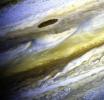
|
|||||

|
1999-06-22 | Jupiter |
Voyager |
1362x1228x3 | |

|
|||||

|
1999-08-24 | Jupiter |
Hubble Space Telescope |
WFPC2 |
2401x2870x3 |

|
|||||

|
1999-08-24 | Jupiter |
Hubble Space Telescope |
WFPC2 |
718x716x3 |

|
|||||

|
1999-08-24 | Jupiter |
Hubble Space Telescope |
WFPC2 |
321x321x3 |

|
|||||

|
1999-08-24 | Jupiter |
Hubble Space Telescope |
WFPC2 |
321x321x3 |
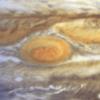
|
|||||

|
1999-08-24 | Jupiter |
Hubble Space Telescope |
WFPC2 |
321x321x3 |

|
|||||

|
1999-08-24 | Jupiter |
Hubble Space Telescope |
WFPC2 |
321x321x3 |

|
|||||

|
1999-08-24 | Jupiter |
Hubble Space Telescope |
WFPC2 |
321x321x3 |

|
|||||

|
1998-06-10 | Jupiter |
Galileo |
Solid-State Imaging |
900x900x3 |
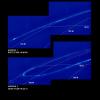
|
|||||

|
1998-06-10 | Jupiter |
Galileo |
Solid-State Imaging |
900x950x3 |

|
|||||

|
1998-06-10 | Jupiter |
Galileo |
Solid-State Imaging |
900x950x3 |

|
|||||

|
1998-06-10 | Jupiter |
Galileo |
Solid-State Imaging |
900x900x3 |

|
|||||

|
1998-10-13 | Jupiter |
Galileo |
Solid-State Imaging |
880x620x3 |

|
|||||

|
1998-10-13 | Jupiter |
Galileo |
Solid-State Imaging |
1152x855x1 |

|
|||||

|
1998-10-13 | Jupiter |
Galileo |
Solid-State Imaging |
592x537x3 |
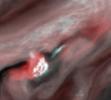
|
|||||

|
1998-12-07 | Jupiter |
Galileo |
Solid-State Imaging |
900x900x3 |

|
|||||

|
1999-03-18 | Jupiter |
Galileo |
Solid-State Imaging |
640x485x1 |

|
|
||||

|
1999-04-15 | Jupiter |
Galileo |
Solid-State Imaging |
640x485x1 |

|
|
||||

|
 |
 |
 |
 |
 |
 |

|
| 1-100 | 101-200 | 201-300 | 301-400 | 401-500 | 501-600 |
| Currently displaying images: 101 - 200 of 583 |